As someone who uses a revolver left handed, I have had to do some work to identify a few reload methods that work well for me. I am sure that none of these are brand new techniques, but I have not seen all of this information presented in a thorough and well explained fashion, nor all in one place. Today, let’s look at what I simply call the Left-Handed Revolver Reload. A strength of this technique is that it works well for all common cylinder release mechanisms.
Step 1: Open the cylinder
We will use the right thumb to release the cylinder latch and our right index finger to push out the cylinder. The right thumb reaches over the top back portion of the frame with its positioning determined by the cylinder release latch. The position of the index finger will depend on how you intend to hold the revolver during the reload, but the position I will treat as standard is with the tip of the index finger somewhere on the cylinder, preferably on or slightly below the center line of the cylinder.
Because the thumb is already moving down and forward as you reach over the frame, Smith & Wessons are usually released at this point.
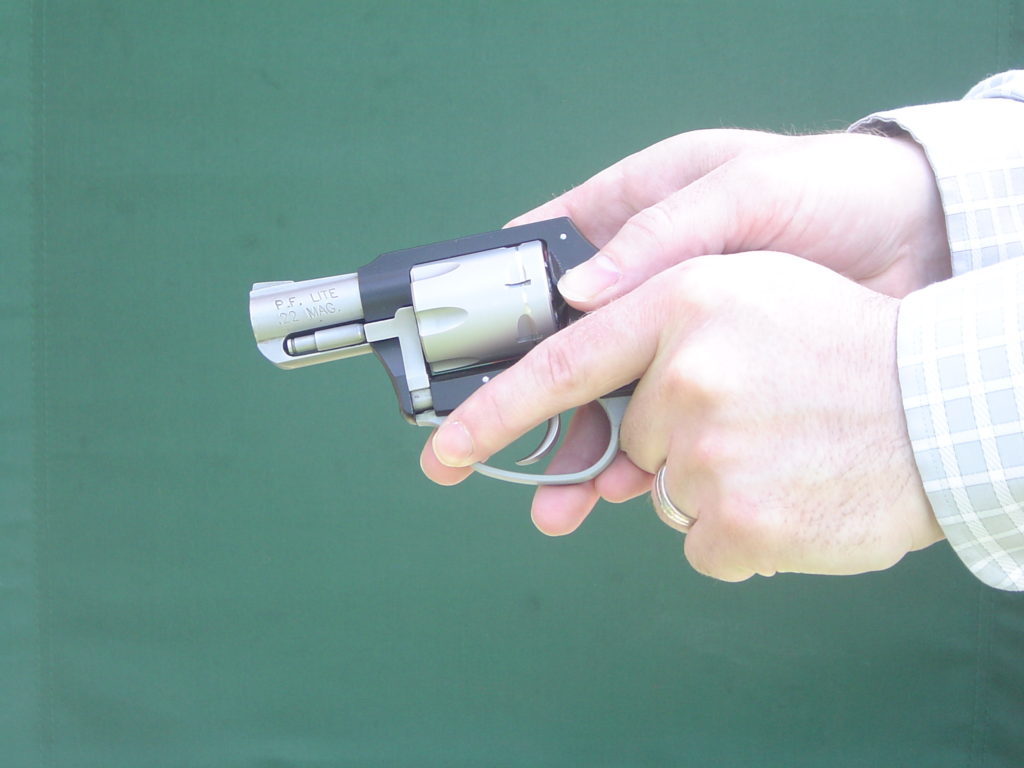
Colt and Ruger latches may be naturally activated as you push the cylinder out of the frame due to this motion twisting the base of the thumb to the right, but this method isn’t quite as fool-proof as the right handed version of Grant Cunningham’s Universal Revolver Reload. In particular, Ruger revolvers may require a conscious effort to release the latch, because the natural movement of the hand is not always sufficient on its own.
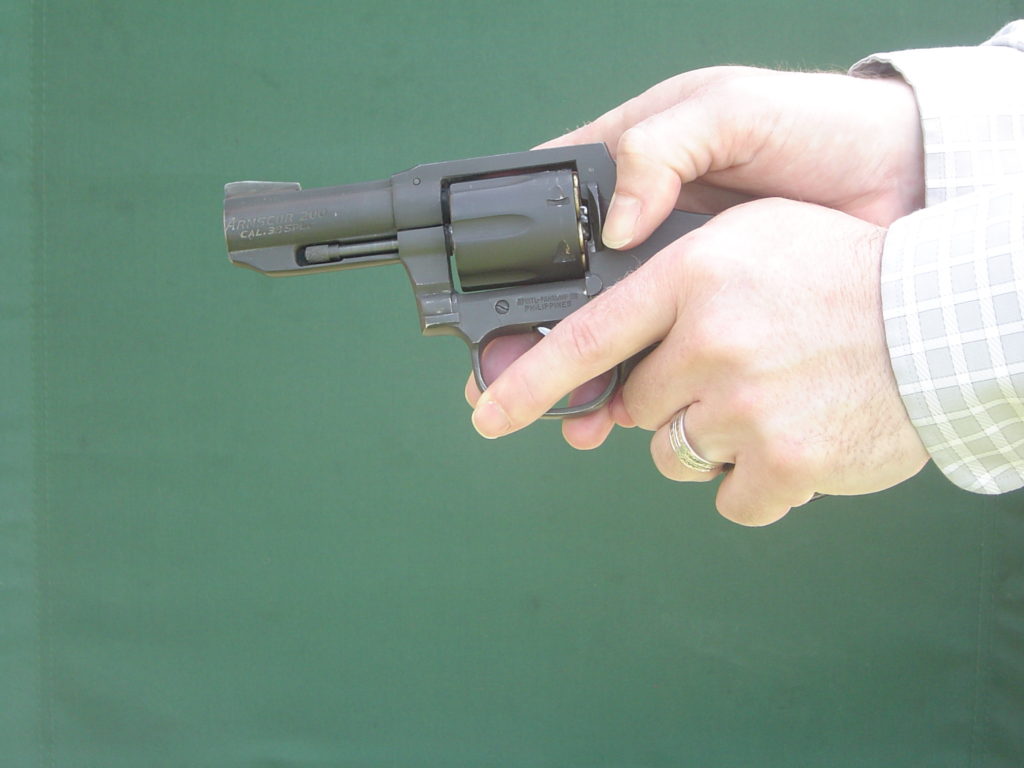
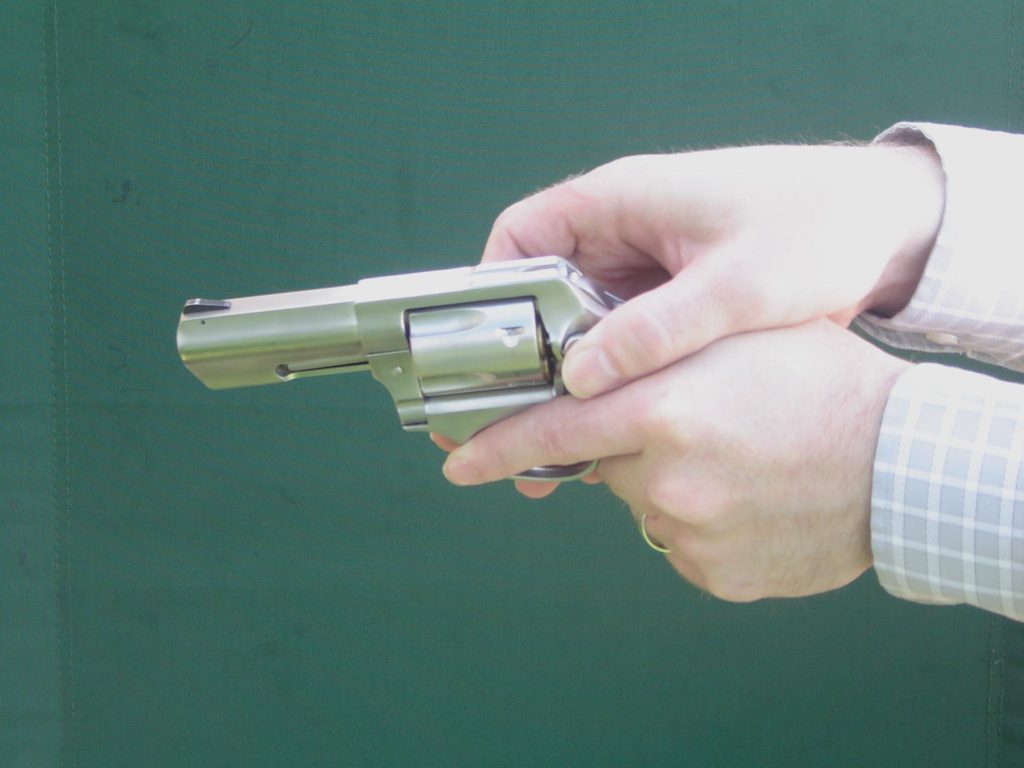
Pointing the tip of the right thumb down rather than forward may help. While pushing the cylinder out of the frame with the right index finger, allow the remaining three fingers of the right hand to pass below the frame. The cylinder should be held between the index and middle finger like an over-sized cigar.

Step 2: Gun Control
At this point we need to talk about gun control. No; not the kind where ownership is restricted, and not the kind where you use two hands to ensure you hit your target. I am talking about the kind of gun control where you make sure all the parts are held in the proper relation and the gun doesn’t get dropped while you are focused on emptying and filling the cylinder. The first two fingers of your hand really do not have the correct leverage to ensure that the cylinder is held all the way open.
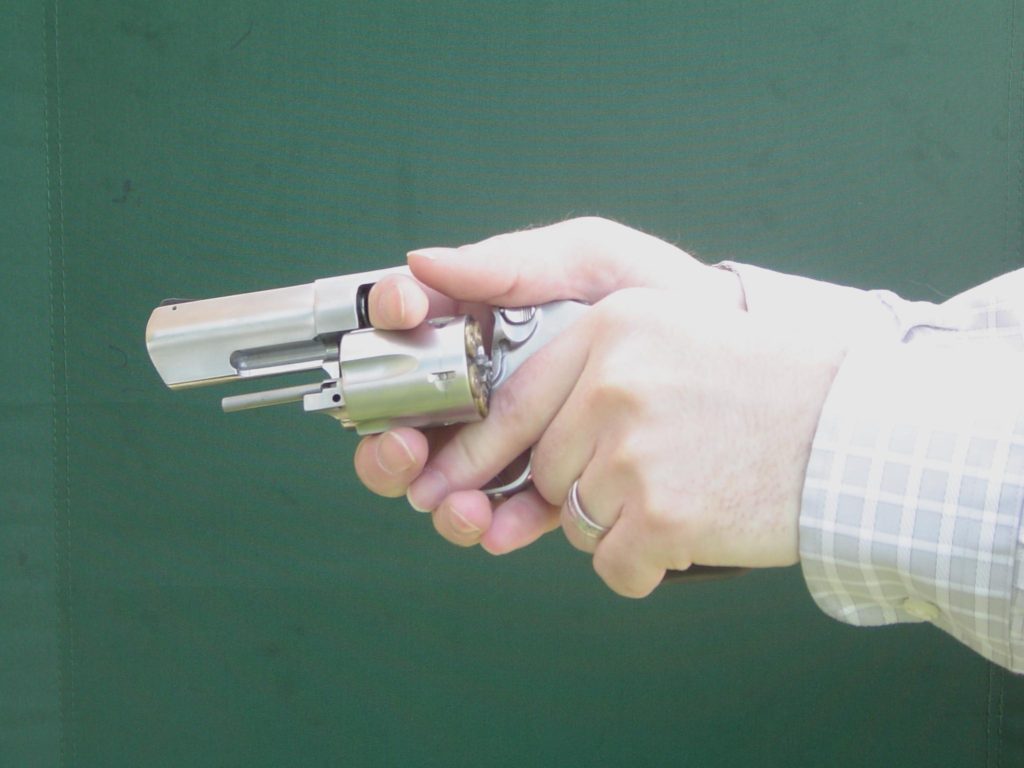
In order to keep the cylinder fully open and allow brass to actually be ejected, we must use leftward pressure on the trigger guard with our ring finger, rightward pressure with the top of the frame with the thumb, or both. At the same time, ensure the index finger stays sufficiently rigid to prevent the cylinder from moving. This sounds difficult, but it really isn’t too bad.
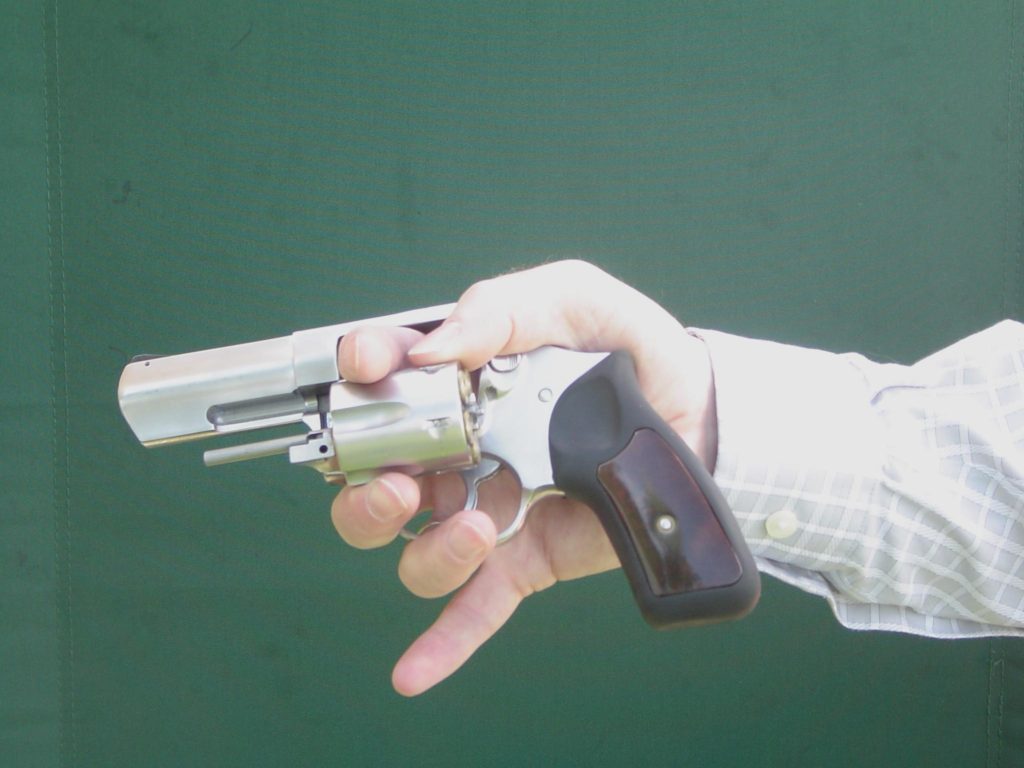
As long as you are aware of the concern it is easy to address, but not being aware of it can lead to a partially closed cylinder stopping your reload. Also be aware that curling the right thumb down will block the path of the ejecting brass. While this position is natural, the results are both counter-productive and relatively uncomfortable. Thus, the tip of the thumb should be placed on the cylinder or pointed up towards the top strap.
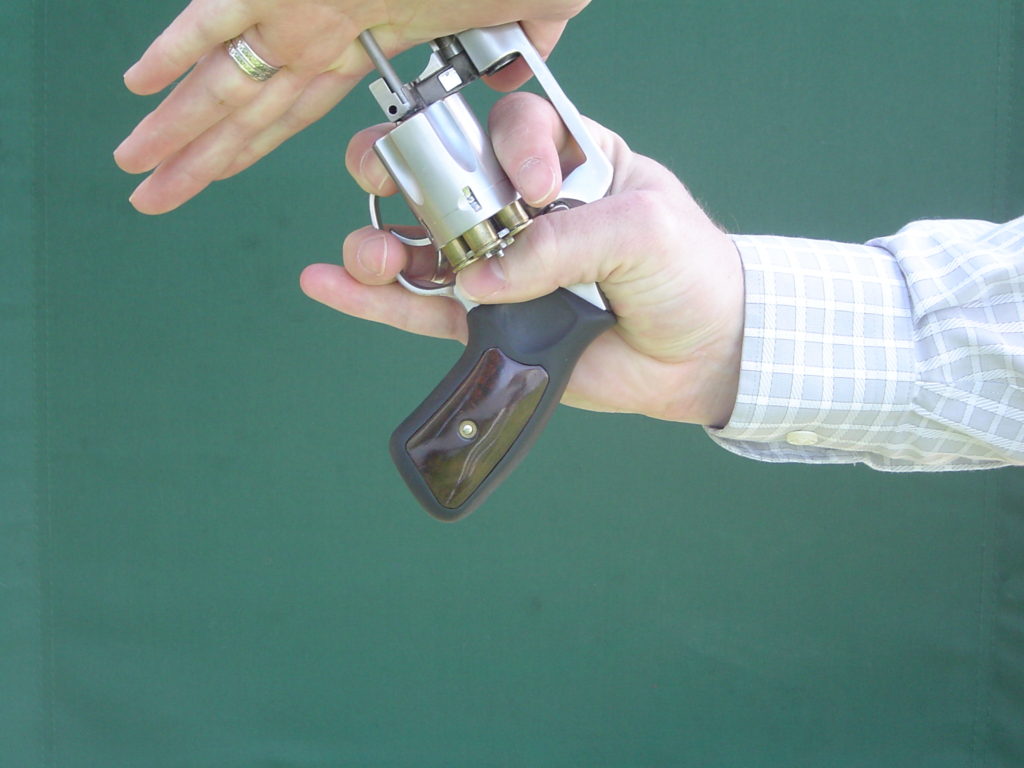
There are a few considerations at this point based on frame shape. A revolver with an exposed hammer will be fairly stable because the hammer spur naturally goes over the top of the right thumb and keeps it from sliding forward (or the gun from sliding backwards depending on your perspective). Similarly, guns with bobbed hammers usually have a steep enough angle on the back of the frame that there is no sliding. Shrouded- or enclosed-hammer revolvers can present more of a challenge. The hump of a Smith & Wesson Centennial model (the 642 and 640, for example) may or may not present enough of a stop to keep the hand from sliding, while the more rounded back of the Ruger LCR is almost certain to be less stable. Unfortunately, while holding the gun in this fashion, the best recourse for those less convenient frame shapes is to squeeze the thumb into the index finger. This helps with the right-ward pressure mentioned above, but can become uncomfortable over the series of several reloads.
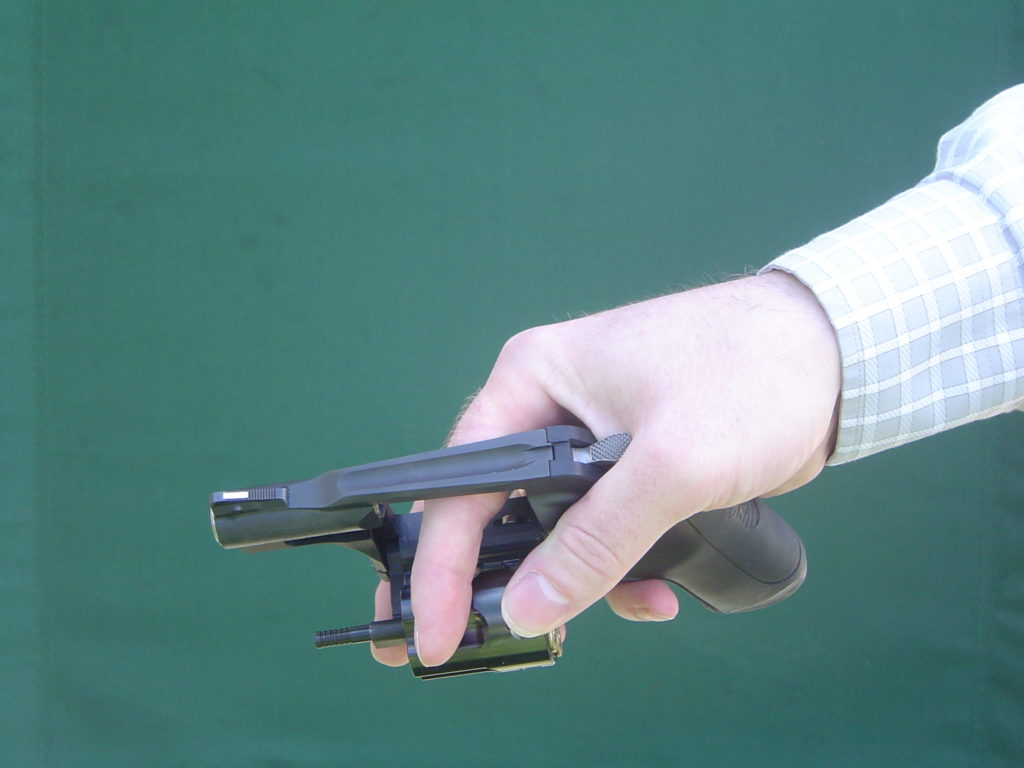
With exposed- or bobbed-hammer guns, forward pressure applied with the base of the thumb will be enough to keep the index finger away from a potentially warm forcing cone, but the other frame shapes may complicate that. If you have concerns about burning yourself on a hot forcing cone, you might consider an alternative method of holding the gun. In this case, we want to reach further forward with the index finger as we release the cylinder. Specifically, the tip of the right index finger should be on or past the frame at the bottom front of the cylinder so that you can push the cylinder out with the first knuckle, but not have the tip of the finger enter the frame window.
Once the cylinder has started to open, slide the right hand forward (so that the fingers of your right hand are around the front of the trigger guard) while using the thumb to open the cylinder. Thumb wrestling the cylinder open can be a bit awkward, and you have to be careful to pry the cylinder outward. If you do not get your thumb against the top strap, it is possible to push the cylinder back closed. That said, the risks may be worth it if you are concerned about burning yourself. With this approach, the cylinder is held fully open by downward pressure from the thumb and upward pressure from the other fingers.
Step 3: Reload
Once you have the cylinder open and under control, reloading is relatively straight forward. Rotate the gun muzzle up and eject the spent cartridges. Then rotate the gun muzzle down. If you are using the standard method of holding the gun described above (cylinder between your fingers like a cigar) you can simply drop your arm and wrist so the gun will be oriented nearly vertically. The alternative method, however requires you to rotate your hand slightly further and some conscious effort may be needed to not relax your wrist into a slightly less vertical orientation. Regardless of the way you hold the gun, you will probably want to relax the last two fingers of the right hand. This allows a gap between the palm of the hand and the grip that will be necessary when we go to reestablish our firing grip. Use the left hand to insert the cartridges into the cylinder using your loading method of choice. I personally use Safariland Comp I speed loaders, but you can use whichever device you prefer.
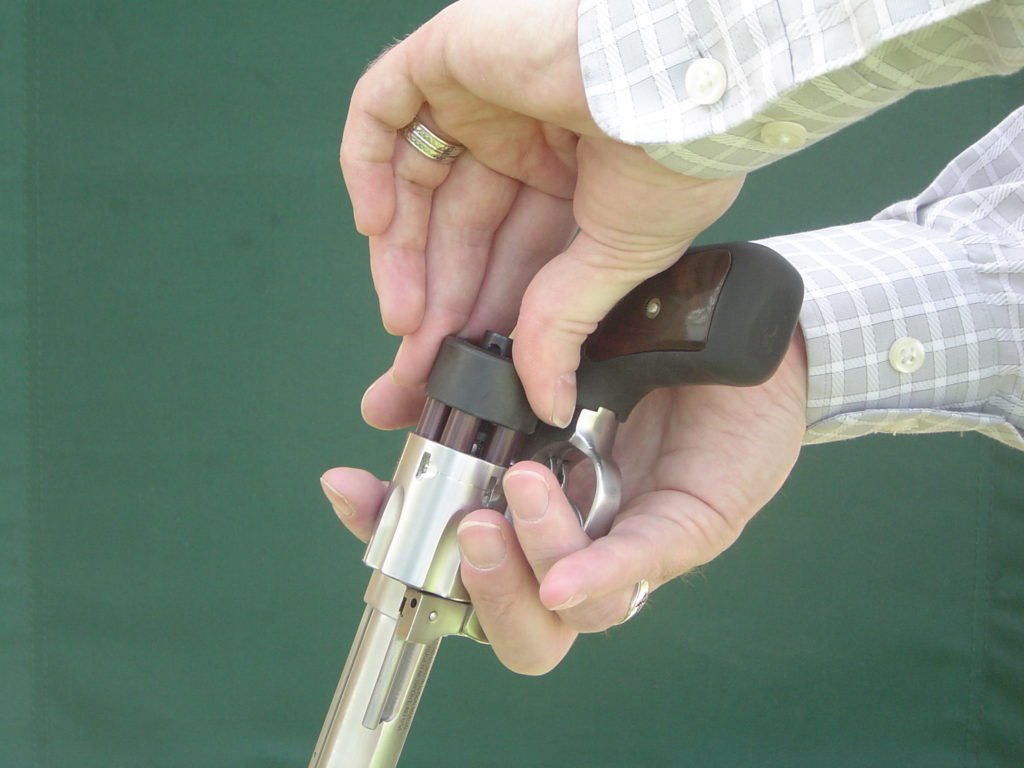
After the revolver is loaded, slide the left thumb between the grip and your right palm to reestablish your grasp on the gun. Because the right wrist is already rotated quite a ways, it is difficult to push the cylinder closed without naturally wanting to raise the muzzle of the gun. Since this can lead to cartridges sliding back and holding the cylinder open, I prefer to hold the cylinder stationary and rotate the gun into position around the cylinder. This can be accomplished with a simple clock-wise rotation of the left hand.
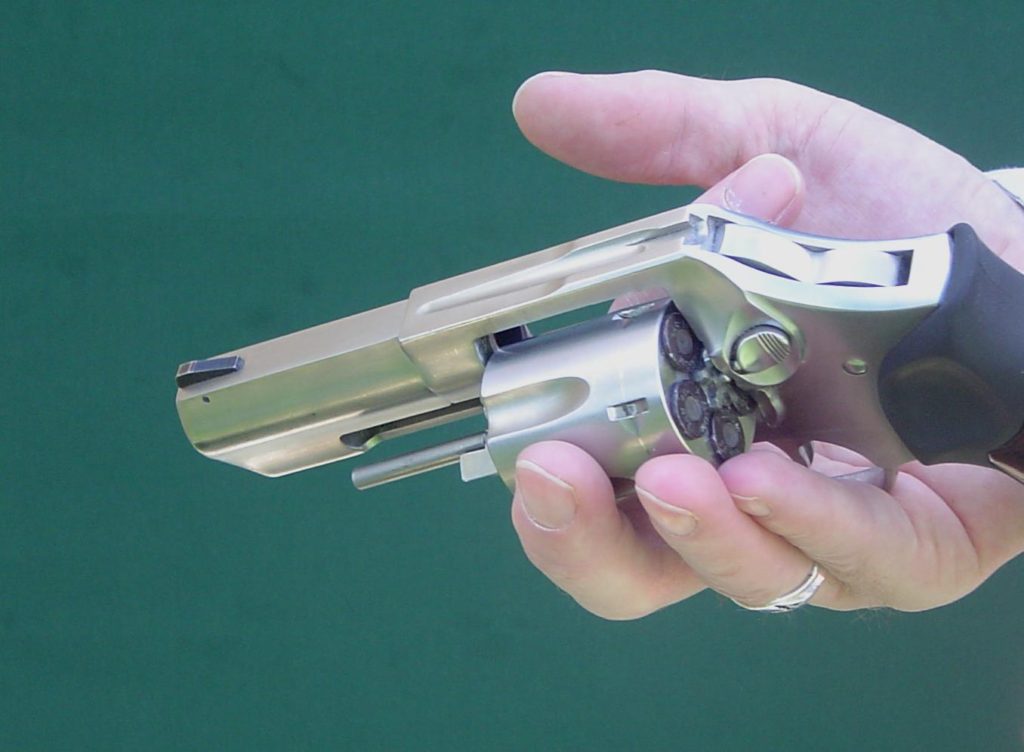
Be certain to curl the index finger of the right hand as you do so. Revolvers may contain a part that Smith & Wesson calls the “hand”, but they do not operate well with additional fingers in the mechanism. At this point, the right hand can slide back into its normal position supporting the left and you are ready to recommence firing.
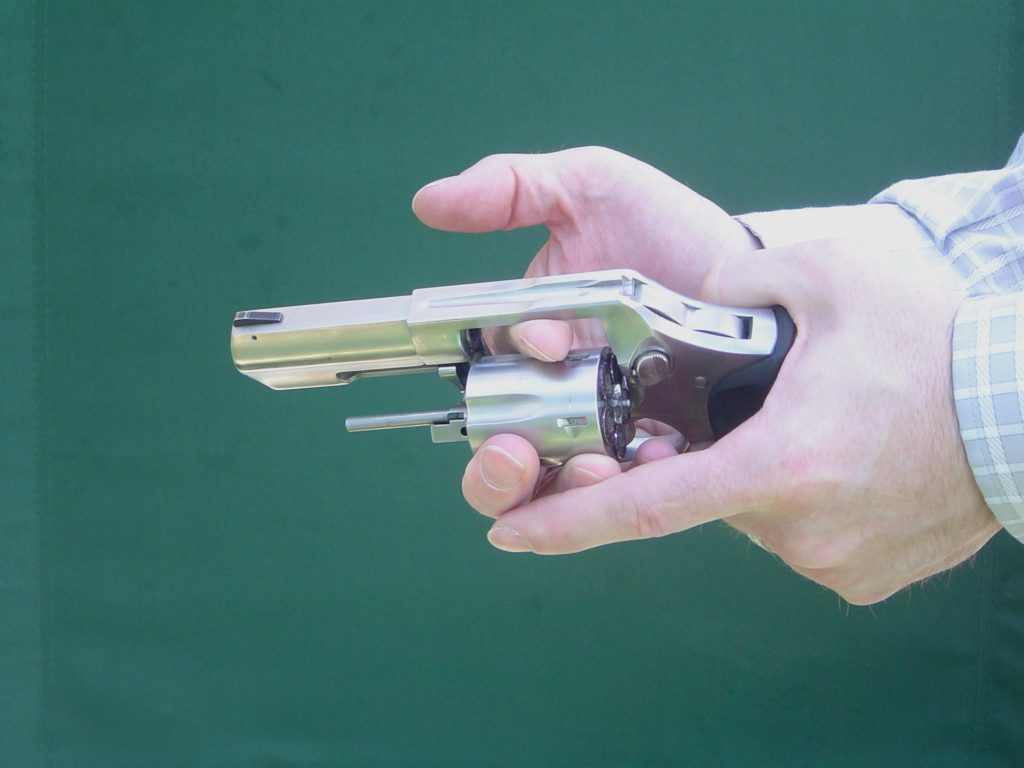
Additional Considerations for the Left-HandeD REvolver Reload
A couple of points deserve special mention. When you reestablish your grasp on the revolver, your trigger finger will naturally be pointed along the cylinder. It seems as though using your trigger finger to close the cylinder would be more efficient, but I have a hard time recommending that approach. If your finger is at all too high, it rolls over the top of the cylinder and enters the frame window, holding the cylinder open. I personally find that it is also very easy to want to rotate the gun away from vertical, increasing the likelihood of spilled cartridges.
It is also rare, but possible, for a speed loader body to become wedged between the frame of the gun and the base of your trigger finger. Using the right hand to support the cylinder and rotating the gun left to close the cylinder provides more opportunity to let the loader fall away as well as allowing you to use the small finger of the right hand to dislodge a particularly persistent loader.
Editor’s Note: Special thanks for Greyson for taking the time to write this up, and take photos for us. Southpaws are an underserved market and I’m glad to have a solid article addressing their particular reload concerns.

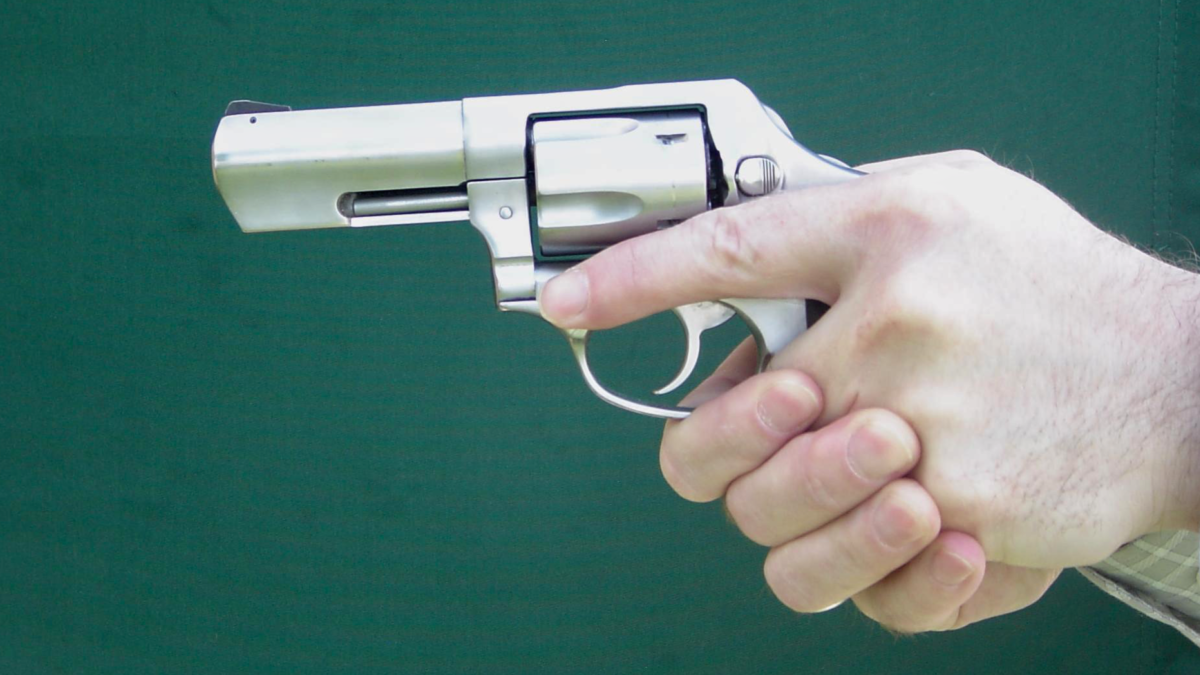
Thanks again for these tactics. I now use the Stressfire from your recent post. I just do not like removing my shooting hand from the gun.
The important thing is that you have a method that works for you. You could pick a lot worse techniques than the StressFire Reload. Personally, I haven’t found a good way to keep a revolver in the left hand while reloading, but I might seriously consider using it if I figured one out.
Wow, thanks Greyson! I’m going to practice that a bit. Not a Southpaw, but good to know just in case, and I have a few friends who could benefit from this. Regarding holding the cylinder between the fingers, have you noticed a point where a .44 or .45 becomes too large for this method? That’s about the only challenge I can picture.
RileyGuy,
I don’t have particularly large hands (I need the palm from a men’s medium glove and the fingers from a small), but I can comfortably get my fingers around an N-frame or Ruger Redhawk cylinder. I haven’t had a chance to handle an X-frame, but, if I had a problem, I suspect it would be related to the distance between the right side of the frame and the center line of the open cylinder rather than the simple width. I like to have the distal knuckle on or past the cylinder, and that might be a stretch on an X-frame.
That said, I’m sure there is someone out there with smaller hands who could run into a problem, so the alternative grasp mentioned below the picture of the LCRx might be the way to go in that situation.
Gotcha, thanks… Now that I’ve had time to give it a try even my smedium hands have more of a challenge in the other direction. My .32 hand ejector ( i frame?) just takes more concentration to keep all fingers clear of ejection. But I definitely like this method in general.
Great article.Not left handed but I’m going to give it a try.
As a lefty, my habit is to transfer gun to right hand
as if I were a right-hander with finger in trigger guard,
right thumb opening cylinder, then letting gun rotate
on the right index trigger finger and placing my right
thumb over the top of the frame and applying pressure
to the side of the open cylinder.
After ejecting with my left palm , I grab speed loader,
while turning gun downward, still with finger inside
trigger guard and right thumb still mostly over the
top frame. I load and then push cylinder in with
left and and transfer gun back to left hand.
May not be the best or right way but Its’ what
I’ve done for years. I never put my fingers or
thumb into the cylinder window.
I like the left handed version that Ayoob and Cunningham teach. Similar but different. With my GP100 I release the cyl using my left index finger. Easy. I don’t think the photos really illustrate the reload well. Simple is better. Happy to see this posted.
Thanks for the training for us lefties. We are left out of a lot of articles, especially if you are a visual learner. This is my big gripe—– if you sell a video state that it shows only right hand techniques. I got a $30.00 video for free and there was no one teaching a leftie. Glad I didn’t order it. This would have been disappointing for a new gun owner.
Happy that Greg posted your article.
Terri,
Glad we could help. A Justin has pointed out, there isn’t a lot of stuff out there for lefties, so I had to piece this approach together using trial and error. No sense in making everyone else re-invent the wheel.
I have shot S&W revolvers competitively for years. The way I have performed reloads was to hit the cyl release with my dominate left thumb, bump the cyl out with the base joint of my right index finger, reach over the top strap with my right thumb, rotate the gun muzzle up and hit the ejector with my left hand. At the last match I shot when I hit the ejector I nearly pushed the gun out of my right hand. I have been trying the method shown but I have been operating the cyl release so long with my left thumb I think it would be difficult to change in match conditions, although the right index finger through the window and stabilizing the cyl with that finger and the thumb under the hammer spur is so close to the way I have always done it makes sense, and the gun is much more secure in my hand. I have one gun with an Apex hammer that is more comfortable to manipulate than those with a hammer spur I have decided to have the spurs removed on my other match guns.
Thanks for the vwry well done instructions.